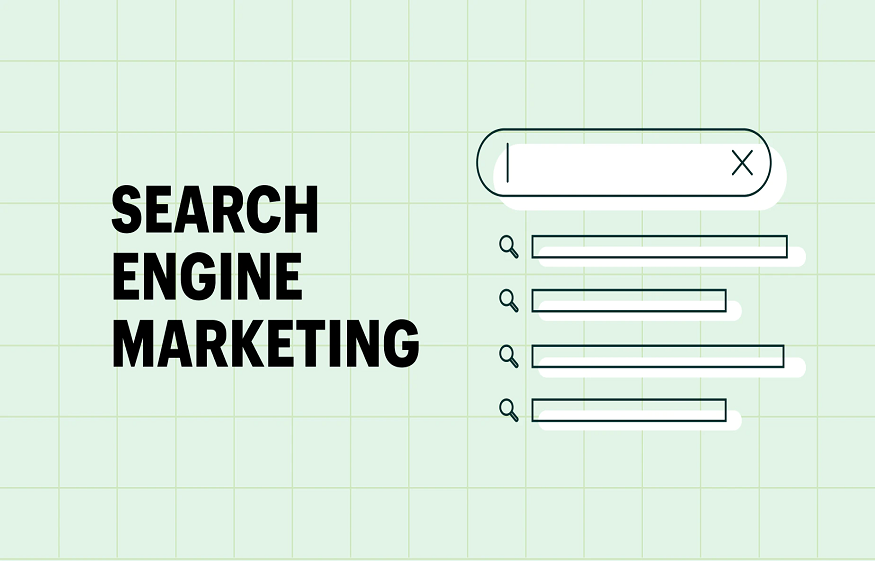In the fast-paced world of digital marketing, Search Engine Marketing (SEM) has emerged as a key tool for businesses to improve their online visibility and drive targeted traffic to their websites.
SEM encompasses various strategies, including paid search advertising and search engine optimization (SEO).
In this article, we will explore some compelling examples of SEM in digital marketing and discuss how these strategies have helped businesses achieve their marketing goals.
1. Pay-Per-Click (PPC) Advertising
Pay-Per-Click advertising is one of the most popular forms of SEM. It allows businesses to display their ads prominently in search engine results pages (SERPs) and pay only when users click on their ads.
Google Ads is a prime example of a PPC platform that enables businesses to bid on relevant keywords and create engaging ad campaigns.
For instance, let’s consider a clothing retailer. By leveraging PPC advertising, the retailer can bid on keywords such as “buy men’s jeans online” or “affordable women’s dresses” to target potential customers actively searching for these products.
This way, the retailer can drive qualified traffic to their website and increase the likelihood of conversions.
2. Display Advertising
Display advertising involves the creation of visually appealing banner or video ads that are displayed on relevant websites, targeting specific audiences.
Through targeting options like demographics, interests, and browsing behavior, businesses can reach their ideal customers effectively.
For example, a travel agency might use display advertising to showcase enticing holiday destinations on travel websites or popular blogs.
By strategically placing these visually captivating ads, the agency can generate brand awareness and attract potential travelers who are interested in exploring those destinations.
3. Remarketing Campaigns
Remarketing campaigns allow businesses to target users who have previously visited their website or shown interest in their products or SEM services.
By utilizing cookies and tracking pixels, businesses can display personalized ads to these users across various platforms and encourage them to revisit their website or complete a purchase.
Imagine a software company that offers a free trial of its productivity tool. Users who sign up for the trial but do not upgrade to the paid version can be targeted through remarketing campaigns.
The company can display tailored ads highlighting the benefits of the full version and offer exclusive discounts to entice users to convert into paying customers.
4. Local Search Marketing
For businesses operating in specific locations, local search marketing is an essential SEM strategy.
This approach involves optimizing online presence for local searches, such as “restaurants near me” or “plumbers in [city].”
By focusing on local SEO tactics and listing the business on directories like Google My Business, companies can improve their visibility in local search results and drive foot traffic to their physical stores.
A prime example is a local bakery that wants to attract customers in its vicinity. By optimizing their website with relevant local keywords and ensuring consistent business information across online directories, the bakery can increase its chances of appearing in local search results.
Furthermore, positive customer reviews and ratings on platforms like Yelp can boost its reputation and attract more customers.
5. Video Advertising
Video advertising has gained significant traction in recent years, with platforms like YouTube providing ample opportunities for businesses to showcase their products or services through engaging video content.
By leveraging SEM, businesses can target specific demographics, interests, or keywords to display video ads before, during, or after relevant YouTube videos.
For instance, a fitness equipment company might create a video ad showcasing its latest home gym equipment.
Through SEM, the company can target fitness enthusiasts searching for workout routines or fitness tips on YouTube.
By capturing their attention with compelling video content, the company can drive traffic to its website and potentially convert viewers into customers.
6. Mobile Advertising
With the increasing use of smartphones and mobile devices, mobile advertising has become a crucial aspect of SEM.
Businesses can create mobile-specific ad campaigns that are optimized for smaller screens and leverage location-based targeting to reach users on the go.
For example, a food delivery app could utilize mobile advertising to target users in a specific area during lunchtime.
By displaying ads that highlight convenient and quick food delivery options, the app can entice hungry individuals looking for a hassle-free lunch solution, ultimately driving more app downloads and orders.
7. Comparison Shopping Engines
Comparison shopping engines (CSEs) allow businesses to showcase their products alongside competitors’ offerings, enabling consumers to compare prices, features, and reviews.
By optimizing product data and bidding on relevant keywords, businesses can improve their visibility on CSEs and drive qualified traffic to their websites.
Consider an electronics retailer looking to increase online sales. By listing their products on popular CSEs like Google Shopping or Amazon Marketplace, the retailer can reach consumers actively searching for electronics.
Optimized product descriptions, competitive pricing, and positive reviews can significantly impact the retailer’s conversion rates and online revenue.
8. A/B Testing and Conversion Rate Optimization (CRO)
SEM goes beyond just driving traffic; it also involves optimizing the user experience and conversion rates on websites.
A/B testing and conversion rate optimization (CRO) are essential components of SEM that allow businesses to experiment with different website elements, layouts, and calls-to-action to improve conversion rates.
For instance, an e-commerce store may conduct A/B tests to compare two different versions of its product pages—one with a single call-to-action button and another with multiple options.
By analyzing the conversion rates and user behavior on each page, the store can determine which version performs better and make data-driven decisions to optimize its website for increased conversions.
Conclusion
Search Engine Marketing (SEM) offers a wide range of strategies for businesses to enhance their online presence, drive targeted traffic, and achieve their marketing goals.
The examples mentioned above, including pay-per-click advertising, display advertising, remarketing campaigns, and local search marketing, demonstrate the versatility and effectiveness of SEM in digital marketing.
To make the most of SEM, businesses should conduct thorough keyword research, create compelling ad content, optimize their websites for search engines, and continuously monitor and refine their campaigns.
By embracing SEM strategies and adapting them to their specific objectives, businesses can gain a competitive edge in the digital landscape and achieve greater success in reaching their target audience.

